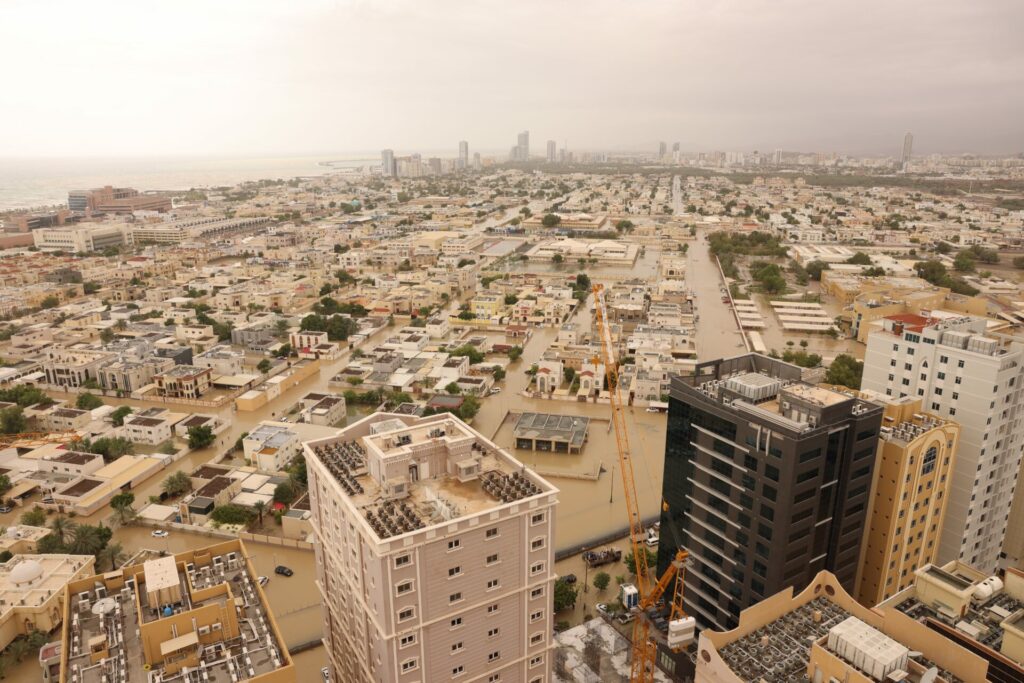With winter’s arrival and the escalation of extreme weather due to climate change, we’re reminded of our vulnerability in the face of nature and the urgent need to climate proof our homes.
In fact, scientists caution that the Middle East may face heavier rains as climate change progresses, emphasising the importance of reinforcing houses to endure these increasingly harsh conditions.
Unfortunately, as global warming continues, people in the region can also expect to experience more frequent days of intense heat, bringing with them physical and financial challenges as we all attempt to stay cool.
Sand and dust storms are commonplace in the UAE, with August seeing hurricane-force winds sending sand and debris propelling across Dubai, felling trees and causing structural damage and flooding.
According to the U.N. Environment Programme, a combination of climate change and land mismanagement is stripping semi-arid areas of vegetation, leading to desertification and exacerbating more frequent and brutal storms. Sand and dust storms are commonplace in the UAE, with August seeing hurricane-force winds sending sand and debris propelling across Dubai, felling trees and causing structural damage and flooding.
Undoubtedly, our homes are our sanctuaries, which we are hesitant to leave. Yet, sometimes we have no choice. Take last year, when flash floods forced more than 3,800 people in the UAE to evacuate as a dangerous deluge hit homes and infrastructure.

In its guide for emergencies, the UAE’s National Emergency Crisis and Disaster Management Authority (NCEMA) lays out how residents can ensure their homes are disaster and climate resilient. This could be as simple as household maintenance or checking water sewerage channels are free of debris.
Thankfully, being forearmed is forewarned and there is much we can do to ensure our homes are robust, resilient and comfortable in the face of escalating extremes.
The Basement
With rain events becoming more extreme, installing gutters, downspouts, and proper drainage systems will redirect rainwater and make it less likely to cause damage. If your basement smells damp or is prone to flooding, installing a sump pump – a pump used to remove water that has accumulated – will ensure that water is pushed outside into suitable drainage areas. Adding a generator, which can be wired directly into the electrical system of your home, will also shield you from flood damage by keeping the sump pump running. A good contractor can also advise you on adding flood-resistant materials to the foundations of your home.
The Garden
Moving outside, planting a touch of green in the form of native, drought-resistant vegetation like bristle grass, acacia and ghaf trees, will help prevent erosion. Permeable landscaping such as gravel will absorb water and french drains can transfer pooling puddles away from the house.
Alarmingly, with flooding comes the secondary risk of landslides. According to NCEMA, homeowners should be familiar with the early warning signs of landslides, including the ‘appearance of new cracks, imbalance, tilting or protrusions in supporting walls’.
Other warning signs for erosion include tilting trees, fences or utility poles, and changes in water drainage. If you notice a change, call in a professional engineer.
The Roof
Your roof is one of your first lines of defence against windstorms. A durable and weather-resistant roof can make a big difference when storms or heavy rainfall hit. Metal, clay, or concrete tiles can weather extremes well. Green roofs are also growing in popularity due to their pleasing aesthetics and the water-absorbing ability of plants to combat runoff.
To reduce heat inside your home, choose roof tiles in clay terracotta or other light colours to reflect heat away and keep your abode cooler. Installing solar panels is also a chance to reduce your reliance on fossil fuels and save money.

Keep Inside Cool
During the hottest months, we’ve all been known to wince at air conditioning bills. Painting exterior surfaces with a green cool coating is an affordable solution to help bring down energy expenses. Additionally, double-glazed or low-emissivity glass, which contains a special coating to make windows more thermally efficient, can be paired with good insulation, to keep hot air out and cooling costs down.
Household Appliances
As we all wrestle with the challenge of lowering the heat-trapping greenhouse gases turbocharging climate change, there are many household appliances that can be upgraded for the dual purpose of using less energy and lowering carbon emissions. HVAC – heating, ventilation, and air conditioning – systems, furnaces, water heaters, washing machines, dryers and stoves can all be swapped out for more modern, efficient models. In the meantime, using a programmable or smart thermostat will keep costs down.
Climate Proof For the Future
After identifying the most likely natural disasters that could affect your home, review your insurance policy to ensure you are adequately protected. Typically, homeowners’ insurance will cover damages from fires and wind however, it usually does not extend to flooding from external sources such as heavy rainfall. To safeguard against this risk, check with your insurance provider and if it’s not covered, make sure to purchase a separate flood insurance policy.
Writing a disaster plan and having an emergency kit ready to go will ensure you are in the strongest possible position if the worst happens. A good place to start is with one gallon of drinking water per person per day, first aid supplies, non-cook, non-perishable food, a can-opener, flashlights and extra batteries.
In the meantime, ensuring our homes are resilient, and running optimally, puts us in the strongest possible position to stay home, protected and secure, should the worst of climate change arrive on our doorsteps.













